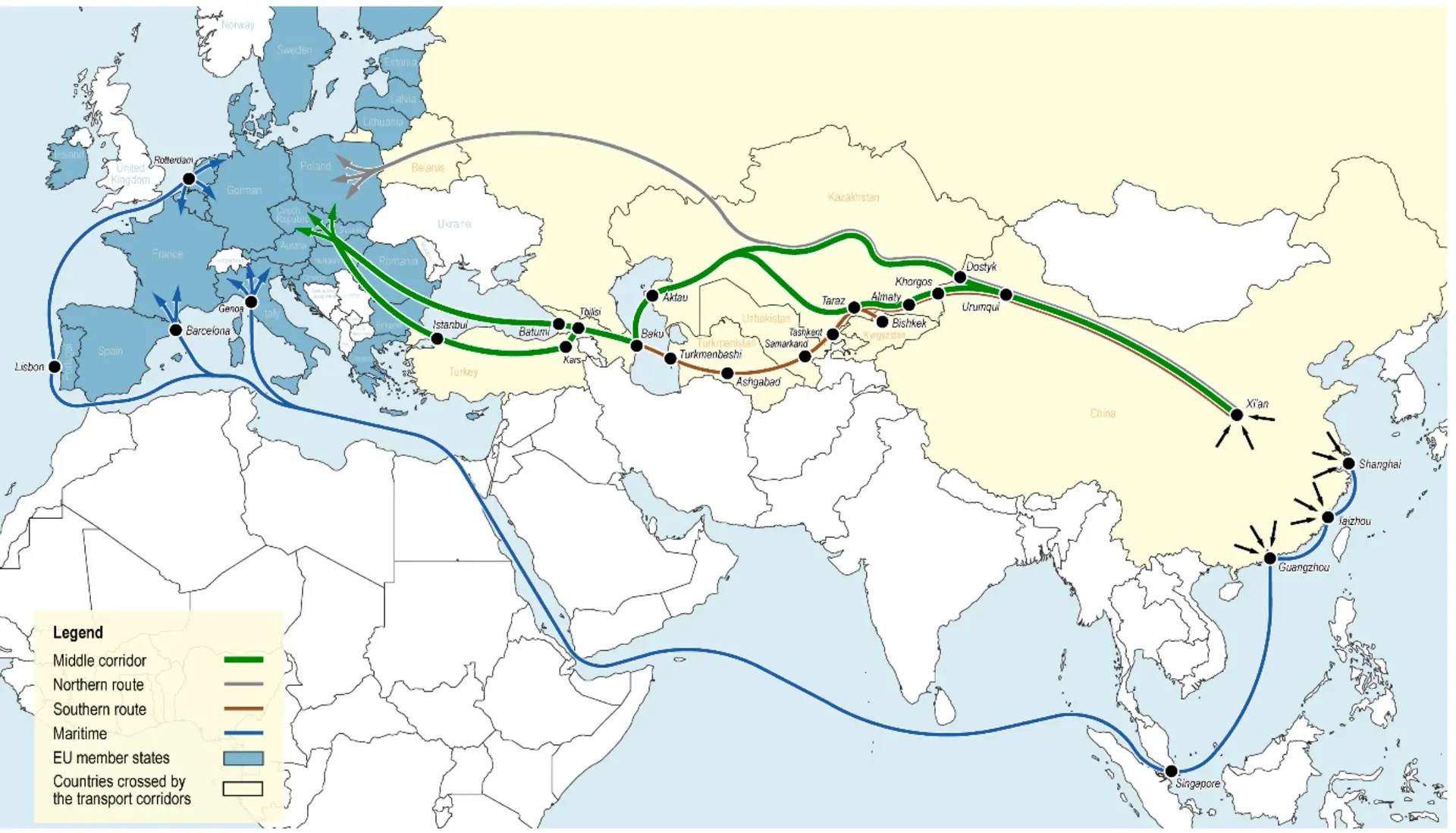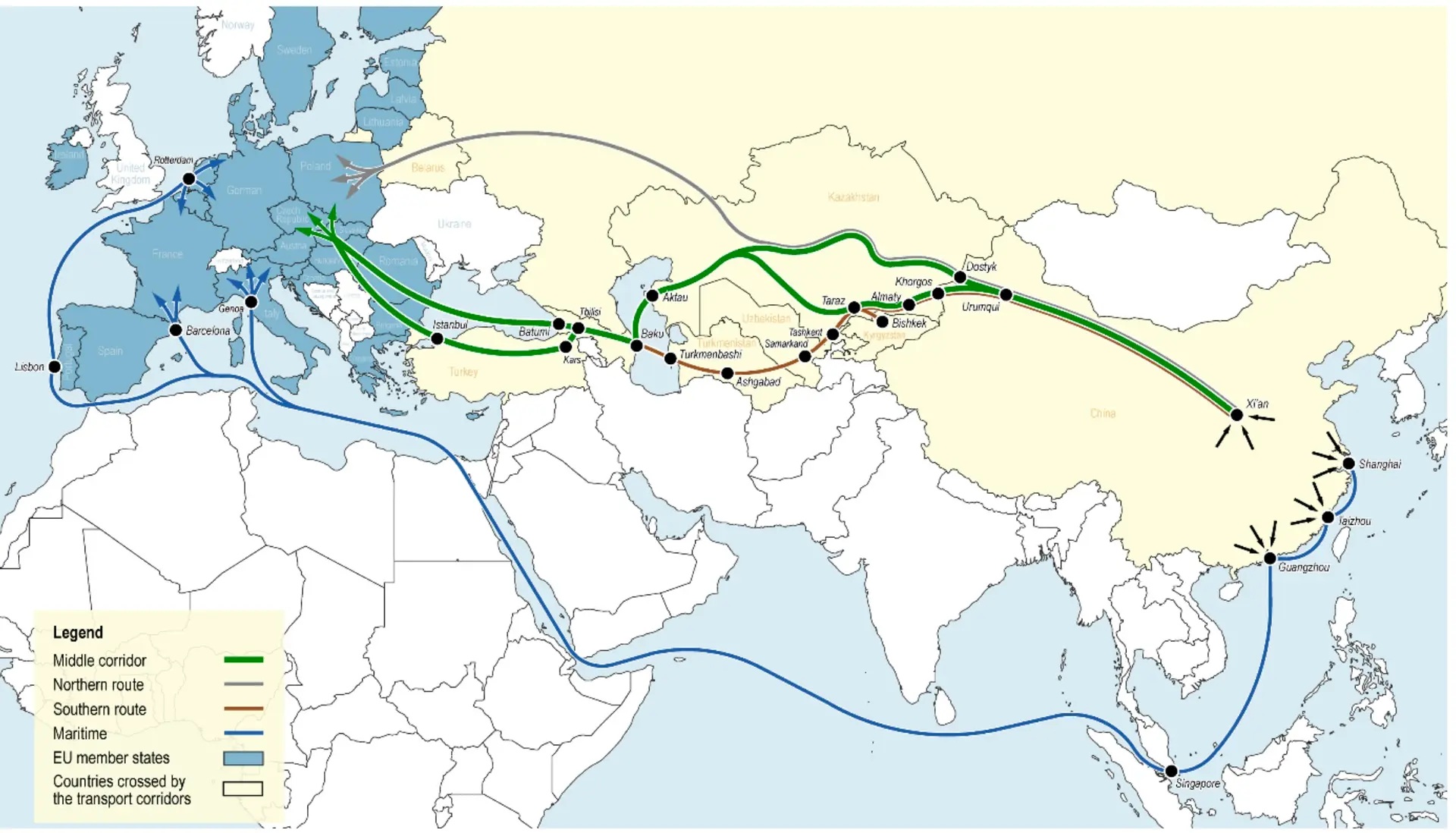
In recent years, Iran has prioritized a pragmatic foreign policy and adopted the “Look to the East” strategy because of its economic and political deadlocks with Western countries. Within this policy, Iran aims to overcome Western sanctions and economic isolation by strengthening its position in a multipolar international system in the long run.[1] Within this policy framework, Iran is increasing its cooperation with Russia and China in particular, while Eurasia is becoming an essential transit hub as a result of the rapprochement between Iran, Russia, and China and attracts attention as an important strategic region in terms of the balance of power. In this way, transport corridors and energy cooperation stand out as the implications of Iran’s Look to the East policy in Eurasia.
Iran’s Efforts to Strengthen its Transit Role
In response to the economic sanctions imposed by the Western countries, Iran aims to create new opportunities through international transit networks. For this reason, Iran, which is situated as a bridge between the Middle East, the Caucasus, and Europe due to its location, intends to take advantage its position and turn it into a geopolitical advantage and prioritizes increasing its role in transit and logistics in Eurasia within the scope of the “Look to the East” Policy. In this context, Iran has strategic importance through the International North-South Transport Corridor (INSTC) project, which connects the Indian Ocean and the Persian Gulf to the Caspian Sea through Iran and extends to Europe.[2] Established in 2000 with an agreement between Russia, Iran and India, the corridor aims to facilitate trade in the region by providing an alternative route to the Suez Canal.[3] While the corridor is an important trade route for Iran to develop its economic potential, it also positions Iran as an essential transit hub (which is also important in terms of its strategic location). Iran also aims to become a major participant in China’s Belt and Road Initiative (BRI) in terms of road and rail connections. Playing a key role in the historical Silk Road as a major transit point between East and West, Iran aims to increase its competitiveness in energy and trade by strengthening its cooperation with China through BRI.[4] Iran perceives joining the BRI as a move to attract foreign investment and reduce its economic isolation caused by international sanctions. However, the rapprochement also carries drawbacks, such as concerns about economic dependence on China and the geopolitical risks of being drawn closer to a superpower.[5] As can be seen from its pragmatic approach to the initiative, Iran intends to use the BRI for its development while also negotiating the dynamics of international relations.[6] Moreover, the negotiations between Azerbaijan and Armenia over the Zangezur Corridor is one of the factors that directly affects Iran’s role in transit routes. Iran is taking diplomatic and logistical measures to ensure its land routes and maintain Eurasian connectivity through Armenia. In addition, Iran seeks to ease Western sanctions and promote the integration of its markets in the East through cooperation with other Central Asian countries, including Turkmenistan, Kazakhstan, and Uzbekistan. In short, Iran’s transit and logistics development efforts within the framework of the “Look to the East” policy can be perceived as an effort to redefine the country in economic and geopolitical terms at the global level.
The Search for Geopolitical Power in the South Caucasus
The South Caucasus region is strategically vital to Iran within the framework of Iran’s “Look to the East” policy. Iran pursues a balancing approach in the South Caucasus region, considering the Zangezur Corridor negotiations between Azerbaijan and Armenia and the sensitivity of its relations with Türkiye. In the South Caucasus, Azerbaijan, one of Iran’s essential neighbors on the Caspian Sea, offers Iran a strategic opportunity for energy, trade, and security cooperation. However, the development of Azerbaijan-Türkiye relations and Türkiye’s growing influence in the Caucasus has become a strategic challenge for Iran. Iran perceives the corridor as a threat to its geopolitical and economic interests and is concerned that the corridor will harm Iran’s trade relations with Armenia. In addition, Iran does not want to lose its geopolitical advantage in the region, anticipating that the corridor will strengthen the North Atlantic Treaty Organization’s (NATO) position in the region through Türkiye’s presence. Iran’s opposition to the Zangezur Corridor represents Iran’s desire to secure its strategic position and increase its participation in regional trade.[7] As for Armenia, the country is Iran’s most strategic ally in the South Caucasus. Iran seeks to maintain energy and trade support to Armenia while maintaining the security of the land link to Eurasia through this country.
Strategic Cooperation with Central Asia
Iran also considers establishing energy and trade cooperation with all of Central Asia an essential foreign policy goal, but is strategically oriented more toward Turkmenistan, Kazakhstan, and Uzbekistan in this region. Iran aims to increase its cooperation with these countries, especially in natural gas and oil trade and energy and transportation projects. In this regard, cooperation with Turkmenistan is of utmost importance for Iran. Exporting Turkmen gas to Iran and re-exporting it through Iran to other markets facilitates Iran’s access to Central Asian energy resources. Moreover, Turkmenistan signed an agreement to export natural gas to Türkiye via Iran in 2025, increasing Iran’s importance as an energy transit country.[8] Meanwhile, establishing railways and trade networks with Kazakhstan and Uzbekistan provides a channel for Iran to open up to Central Asian markets. Iran continues its efforts to become a regional energy hub via the Caspian Sea to measure the energy potential of Central Asian countries and deepen regional economic integration.[9] Accordingly, Iran aims to consolidate its economic and geopolitical position in Eurasia by developing energy and trade relations with Central Asia. Therefore, Iran’s growing influence in Central Asian markets is part of its effort to counter the effects of Western sanctions and increase its influence as a regional actor.
Iran’s “Look to the East” policy is arguably the most significant strategic shift in its foreign policy and has been influenced by its confrontation with the West and the consequences of economic sanctions. This policy aims for Iran to become economically independent and strengthen its regional position by promoting strategic partnerships in the South Caucasus, Central Asia, and East Asia while deepening cooperation with Russia, China, and Central Asian countries.
Conclusion
China and Russia stand out as two crucial partners in Iran’s “Look to the East” policy and play an important role in Iran’s efforts to avoid Western sanctions and overcome economic isolation. Therefore, while Iran aims to seize important opportunities in the region within the framework of China’s new transportation routes project, it also cooperates with Russia on the energy and security sectors and aims to increase its geopolitical role in the region. On the other hand, cooperation between Iran, the South Caucasus, and Central Asia is vital for Iran’s efforts to increase its energy diversity. However, Iran’s rapprochement and multidimensional relations with Eastern powers such as China and Russia through new partnerships and collaborations raise some concerns about Iran’s independence in terms of regional and domestic dynamics. Generally speaking, Iran’s “Look to the East” policy has provided the country with the advantage of seeking new partners and creating economic leverage in the region and an alternative to Western dominance. This strategy, by bringing with it strategic interdependencies and several geopolitical risks, has created the need for Iran to pursue a balanced policy between East and West.
*Image: Caspian Policy Center
References
Bipul Chatterjee and Surendar Singh, “An Opportunity for India in Central Asia,” The Diplomat, 4 May 2015, https://thediplomat.com/2015/05/an-opportunity-for-india-in-central-asia/
Cong Peiwu, “Jointly Building the ‘Belt and Road’, China and Iran Stride Forward Hand in Hand,” Tehran Times, 30 November 2024, https://www.tehrantimes.com/news/506919/Jointly-Building-the-Belt-and-Road-China-and-Iran-Stride-Forward
Henelito A. Sevilla, “Iran’s Pragmatic Approach in Accommodating China’s Belt and Road Initiative: A Determinant for Future Closer Bilateral Cooperation,” in Understanding China, 2023, 99–116, https://doi.org/10.1007/978-3-031-31042-3_6
Nivedita Das Kundu, “Analytics,” Valdai Club, 24 January 2024, https://valdaiclub.com/a/highlights/international-north-south-transport-corridor/
Giorgia Perletta, “Iran’s Foreign Policy From Non-Alignment to ‘Look to the East’: Between Ideology and Pragmatism,” Middle East Critique, 1–21 August 2024, https://doi.org/10.1080/19436149.2024.2384805
“Turkmenistan Reaches Deal With Turkey to Ship Natural Gas via Iran,” AP News, 11 February 2025. https://apnews.com/article/turkmenistan-turkey-iran-gas-0ed1938eba8c201379ecf7098db96d12
Nargiza Umarova, “How Does Uzbekistan Develop Transport Links With the South Caucasus?”, Caspian Policy Center, 21 March 2025, https://www.caspianpolicy.org/research/category/how-does-uzbekistan-develop-transport-links-with-the-south-caucasus-14005
Vusal Gasimli, “The ‘Zangezur Corridor’ Is a Geo-economic Revolution,” Emerging Europe, 17 May 2021, https://emerging-europe.com/opinion/the-zangezur-corridor-is-a-geo-economic-revolution/
[1] Parletta, “Iran’s Foreign Policy from Non-Alignment to ‘Look to theEast’: Between Ideology and Pragmatism”
[2] Kundu, “Analytics,” n.d.
[3] Singh, “An Opportunity for India in Central Asia.”
[4] Peiwu, “Jointly Building the ‘Belt and Road’, China and Iran Stride Forward Hand in Hand.”
[5] Parletta, “Iran’s Foreign Policy from Non-Alignment to ‘Look to theEast’: Between Ideology and Pragmatism”
[6] Sevilla, “Iran’s Pragmatic Approach in Accommodating China’s Belt and Road Initiative: A Determinant for Future Closer Bilateral Cooperation.”
[7] Gasimli, “The ‘Zangezur Corridor’ Is a Geo-Economic Revolution.”
[8] Turkmenistan Reaches Deal With Turkey to Ship Natural Gas via Iran”
[9] Umarova, “How Does Uzbekistan Develop Transport Links With the South Caucasus?”
© 2009-2025 Avrasya İncelemeleri Merkezi (AVİM) Tüm Hakları Saklıdır
Henüz Yorum Yapılmamış.
-
HOCALI SOYKIRIMI VE BÜYÜK ERMENİSTAN RÜYASI
Ata ATUN 11.05.2014 -
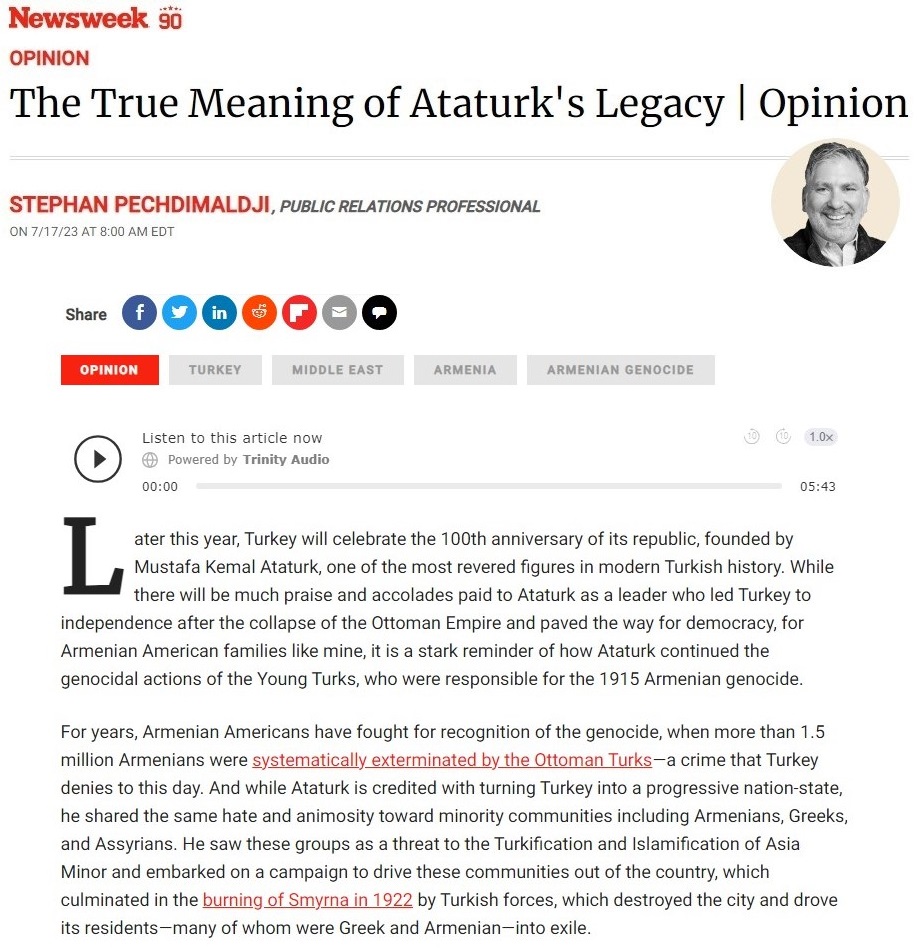 BİR HALKLA İLİŞKİLER UZMANININ MERCEĞİNDEN ‘TARİH’ - 27.07.2023
BİR HALKLA İLİŞKİLER UZMANININ MERCEĞİNDEN ‘TARİH’ - 27.07.2023
Jeremy SALT 28.07.2023 -
RADİKAL GAZETESİNDE MOKASEN AYAKKABILI BİR DAĞCI
Pulat TACAR 15.04.2012 -
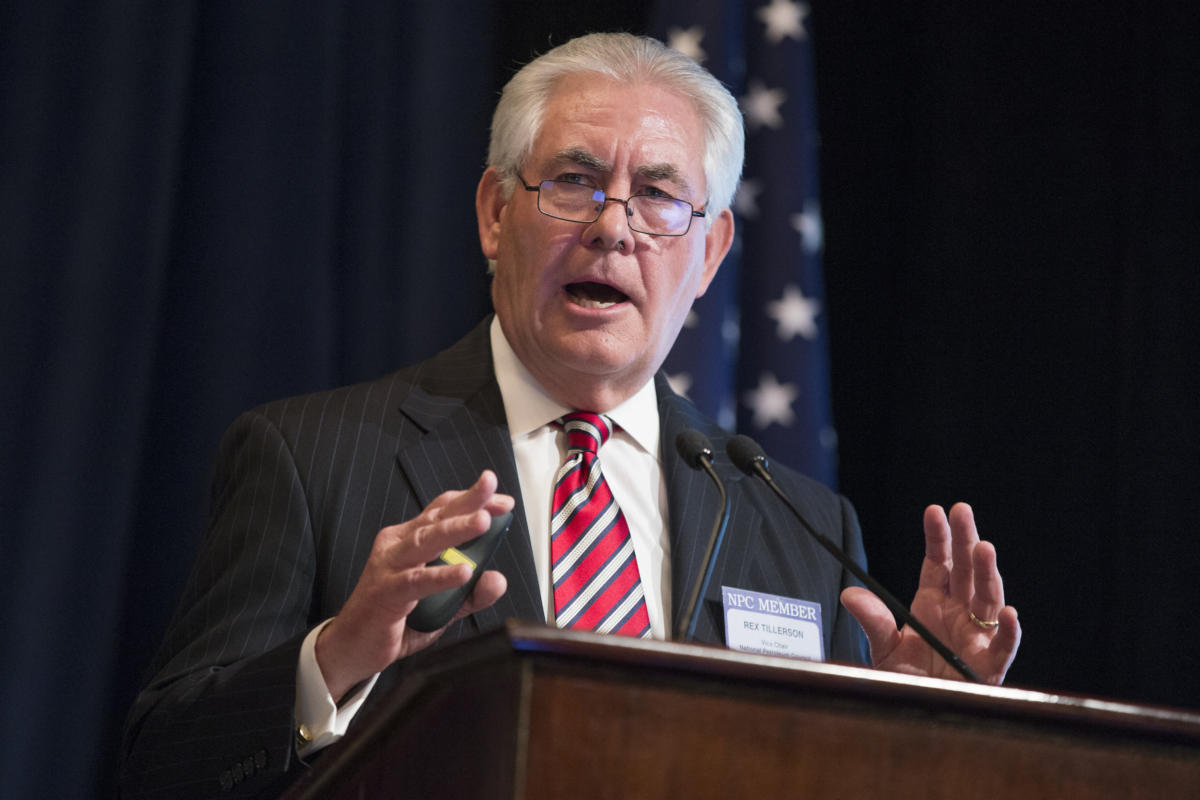 US SECRETARY OF STATE REX WAYNE TILLERSON’S ANSWERS TO THE QUESTIONS OF THE NEW JERSEY STATE SENATOR ROBERT (BOB) MENENDEZ
US SECRETARY OF STATE REX WAYNE TILLERSON’S ANSWERS TO THE QUESTIONS OF THE NEW JERSEY STATE SENATOR ROBERT (BOB) MENENDEZ
AVİM 09.02.2017 -
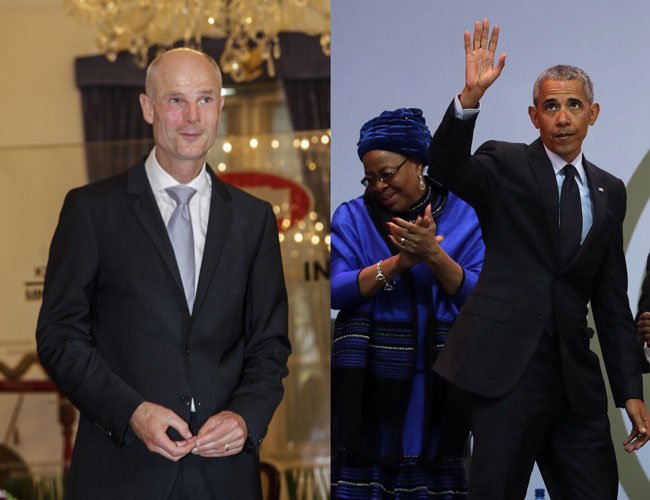 DUTCH FOREIGN MINISTER VERSUS OBAMA - HÜRRİYET DAILY NEWS - 26.07.2018
DUTCH FOREIGN MINISTER VERSUS OBAMA - HÜRRİYET DAILY NEWS - 26.07.2018
Teoman Ertuğrul TULUN 01.08.2018


